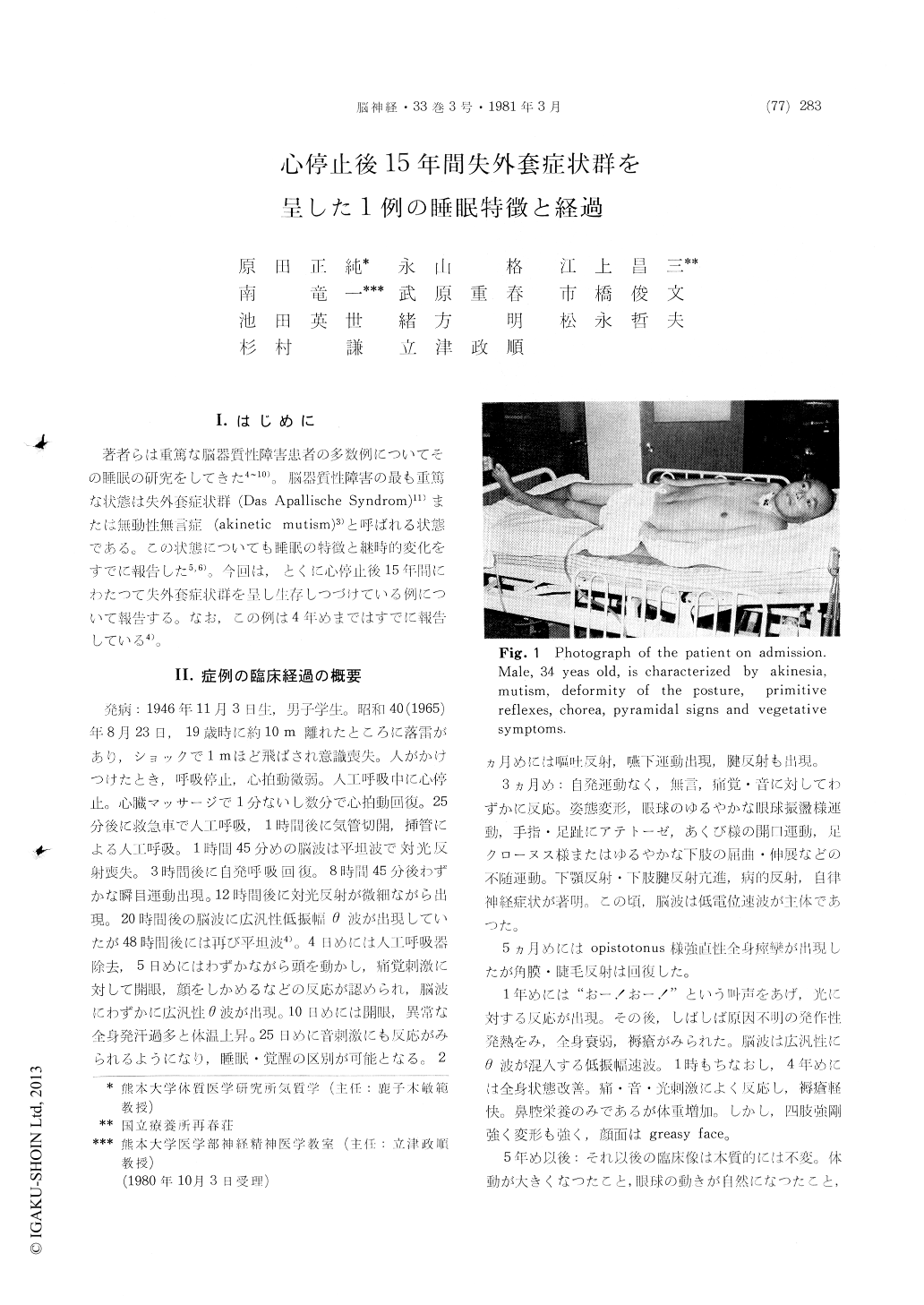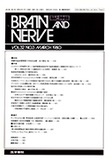Japanese
English
- 有料閲覧
- Abstract 文献概要
- 1ページ目 Look Inside
I.はじめに
著者らは重篤な脳器質性障害患者の多数例についてその睡眠の研究をしてきた4〜10)。脳器質性障害の最も重篤な状態は失外套症状群(Das Apallische Syndrom)11)または無動性無言症(akinetic mutism)3)と呼ばれる状態である。この状態についても睡眠の特徴と継時的変化をすでに報告した5,6)。今回は,とくに心停止後15年間にわたつて失外套症状群を呈し生存しつづけている例について報告する。なお,この例は4年めまではすでに報告している4)。
Male, 34 years old, born in November 1946.
In 1965, at the age of 19, he suffered from cere-bral anoxia due to cardiac arrest caused by being struck by lightning. During the 15 years since that accident, he has exhibited apallic syndrome. The clinical symptoms, which has remained almost the same until now, are akinesia, mutism, deformity of posture, primitive reflexes, chorea, pyramidal signs and vegetative symptoms. His only recog-nizable reactions are to pain and sound. At present, diaper is used and has been kept in satisfactory condition by nasal feeding.
Around the 25th day after the incidence, sleep was recognized during the night and wakefulness during the day, and the rhythm of his sleep had been recovering. Until the 5th day after the ac-cident, his EEG showed a flat, but thereafter there were periods in which a diffuse low voltage theta activity was observed. When the rhythm of sleep and wakefulness was recognized, the EEG at waken-ing time showed a generalized low voltage fast activity.
From the 3rd month, all-night sleep EEG moni-toring by means of polygraphy was conducted. At that time, sleep was distinguished into two phase : light sleep gave a diffuse rythmic theta activity, while deep sleep showed a flat EEG activity. REM sleep accounted for 20% of total, and total sleep hours per day had been increasing. During 2nd year, his sleep EEGs consisted of three distinct patterns, i) sleep with a diffuse rythmic theta activity, ii) sleep with a alpha activity of 8-9Hz, and iii) sleep with a low voltage fast activity. REM sleep decreased slightly to 13% and total sleep hours also decreased.
In the third and fourth year, no obvious changes were observed in the sleep EEG. Hours of sleep showed a tendency to decline, and periods of REM sleep also decreased, but their ratio to the total sleep did not change. In 8th year, a delta activity appeared in deep sleep stage and during the light sleep a low voltage activity (suppressed sleep phase)was recognized. The patient's condition continued with little change until the 16th year after the incidence, but neither vertex sharp wave nor spindle sleep wave appeared.
In 16th year, observation by means of CT scan-ning revealed conspicuous dilatation of the ventricles of the brain. Furthermore, the all parenchyma of the brain has become thin, and the brain stem has shrunk. (Authors's abstract)

Copyright © 1981, Igaku-Shoin Ltd. All rights reserved.


